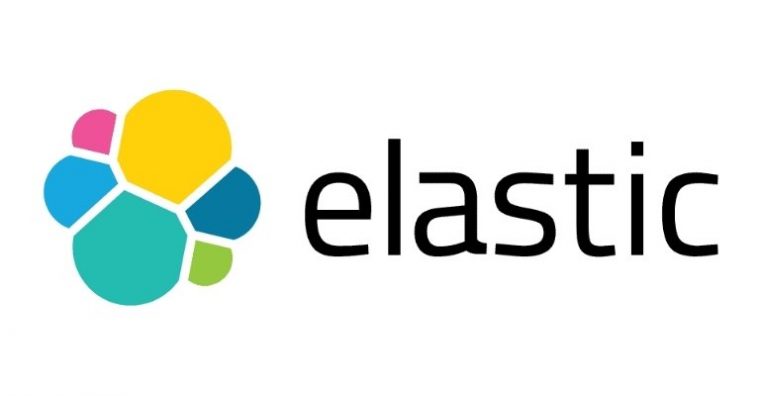Released on 28 July 2020, the new Magento 2.4 comes with a long list of new features, bug fixes and security enhancements to the world’s no.1 e-Commerce platform.
What is new in Magento 2.4?
- New and improved default search engine
- Improved Media Gallery
- New feature Seller-Assisted Shopping
- New feature Purchase Approval Workflows (only for Magento Commerce)
- Two-factor authentication for improved security
- Higher technical requirements overall
Clearly Magento is acting on some of the biggest concerns of its community of merchants, like search and image management.
The wide-ranging scope of work shows that the Magento brand has obviously matured within Adobe’s house of brands.
The effort invested in Magento 2.4 is perfectly illustrated in this tweet from Magento itself.
Yay! @magento 2.4 is out the door!
Check our #releasenotes for the goods: https://t.co/mexkOFPgbb pic.twitter.com/FDFdjSveT0
— Magento DevDocs (@MagentoDevDocs) July 28, 2020
For the thousands of online stores still on Magento 1, the new Magento 2.4 adds a few more reasons towards migration to Magento 2.
If you are a Magento 1 merchant, feel free to contact us directly and we can help you figure out your best way to benefit from the global shift to e-Commerce that is happening.
Now let’s devote some more attention to what’s new in Magento 2.4.
Much, much better default search
Search is the action that almost every customer undertakes after landing on your online store. You need the search experience to be not just good, but excellent.
In Magento 2.4, the default Magento search engine is no longer powered by MySQL. Magento now requires you to install Elasticsearch on your server before going on with Magento 2.4.

Truth be told, Magento is somewhat favouring Elasticsearch for a while now.
Now that Elasticsearch is obligational, there will be higher costs connected to maintaining another service on your server. Especially if your current hosting provider doesn’t support it by default.
For us at Inchoo, we’ve constantly been advising clients to consider alternative search engines. Simply put, Magento’s default search didn’t provide good-enough user experience.
We’ve had great experiences with the Klevu search engine. It’s highly intuitive, learns in real time, shows popular searches and easily works through spelling mistakes.
But what makes Klevu the premium choice in its category are features like self-learning results based on user behaviour and purchase history. There is also its detailed dashboard for analysis and reporting, layered search etc.
However, please note that Klevu is a bit more costly alternative to the default solution, which you can check for yourself on their pricing page.

Semantic search engines like Klevu lead to higher conversions than database search
All in all, the search improvement in Magento 2.4 is definitely good news. You can provide your customers with an even better search experience if you choose to invest some more.
New Media Gallery and Two-Factor Authentication
Here we have some more improvements in user experience, only this time it’s for the Admin user.
Two-factor authentication also adds to the security of your Magento Admin account. The procedure is basically the same as in most services that have 2FA. A system-generated code is sent to the user as the second layer of authentication.
And with the completely redeveloped Media Gallery, your store admin can now search, filter and sort images faster than in previous versions of the platform. Magento even claims that it “performs up to 30 times faster”.
 Example of KEH Camera, world’s no. 1 retailer of used camera equipment, with its impressive visuals
Example of KEH Camera, world’s no. 1 retailer of used camera equipment, with its impressive visuals
Images sell. Making it easier to work with images will translate to a more efficient sales process through your e-Commerce store.
Additionally, the new Media Gallery is integrated with Adobe Stock in a way that lets you access stock image previews right from the Media Gallery.
Yes, it’s basically Adobe up-selling its stock images business. But it’s good business and for some clients this feature is worth looking into.
Seller-Assisted Shopping for better customer service
The last time you needed help from some customer service representative, was he/she able to walk you through the entire process of using the service from your perspective?
If yes, that was probably great customer service.
With Magento 2.4’s new feature Seller-Assisted Shopping, your Customer Service Representatives can log into the website as the customer from the Magento Admin.

They no longer have to try countless options only to end up awkwardly asking the customer to hand over his/her password.
Now they can basically guide and assist the customer in all aspects of the buyer’s experience:
- For example, they can help the customer find a product
- Show them how to set up a certain feature like a wishlist
- They can guide the customer through custom functionalities that are best understandable in the storefront experience (e.g. a product configurator)
- They can impress customers and save them time by quickly creating orders and quotes on their behalf
- And they can take care of administrative tasks such as adding buyers and setting up approval rules
Purchase Approval Workflows (only for Magento Commerce)
This new functionality brings better spending control to B2B buying companies, enabling them to set up approval mechanisms for individual purchases.
For that they can create approval workflows with specific rules based on order value, number of SKUs or shipping costs.

Let’s say a company requires any purchase over USD 5.000,00 or over 10 SKUs be approved by the Purchasing Manager. This can easily be set up automatically with a Purchase Approval Workflow.
There can even be multiple approvers, and each of them is automatically notified when their approval is needed. Approvers can easily approve or reject, as well as comment on a purchase order in their accounts.
Buyers also receive notifications at each stage of the purchasing process, which adds to the transparency of the whole process.
In-Store Pickup (or Click-and-Collect)
This is one feature we strongly recommended to our retail partners.
A nice example is the Click-and-Collect feature we’ve developed for our partner Zee and Co. UK

Our experience shows that the Click-and-Collect feature has 3 huge benefits.
First, it improves conversion by removing shipping fees from the sum total.
Second, it increases the chance of up-selling – some customers make extra purchases as they come to the store to pick up an online order.
Third, it is a great example of synergy between digital and the good old brick-and-mortar store. It brings you customers to both of these important sites.
In-Store Pick Up is now native to Magento 2.4 and comes with both the Open Source and the Commerce versions.
It enables displaying eligible pickup locations in combination with important info such as working hours. When an online order is ready for pickup, store operator can notify the customer with a single click. There is also possibility for curbside pickup.
General platform upgrades and security improvements
Other than the previously mentioned addition of Elasticsearch, Magento 2.4 comes with some more platform upgrades that developers should pay attention to.
You can find them all among the Magento 2.4 technology stack requirements.
Most importantly, Magento 2.4 now supports the latest versions of the PHP programming language (PHP 7.4) and the MySQL database (MySQL 8.0) because of their improved performance, security and reliability.
This also goes to show how Magento is optimising its platform towards the most advanced technological requirements.
New PWA Studio
According to Magento, the updated PWA Studio makes it “faster, easier, and more cost effective to launch PWA storefronts”.
PWA Studio is a sort of a toolbox that has now been enriched with a couple of more tools and best practices for building PWAs.
Our experience shows that PWAs at the moment do not bring enough growth in revenue to justify for the high maintenance costs. Because after the initial build of the PWA, you still need to connect it to the extensions and maintain it for future Magento versions.
We cover this topic extensively in our special blog post dedicated to PWAs.
The modifications to the PWA Studio certainly are a step in the right direction. Pretty soon it will be possible to tell if they translate to a more significant revenue growth for PWA merchants.

There are also improvements to support the headless commerce concept, which is definitely potent. In short, headless is such a solution that enables your e-commerce store to provide a custom user experience on all digital channels. Not just desktop and mobile – headless is the concept that will take e-commerce to the Internet of Things.
For mature online stores looking for new growth opportunities, this is very much worth looking into.
Conclusion – Should I Migrate My Online Store to Magento 2.4?
If your online store is still on some version of Magento 1, then the answer is likely yes. Not just because Magento 1 is no longer officially supported, but also because with 2.4 the Magento platform is positioning itself quite high in terms of technical requirements and performance.
If your online store is on a previous version of Magento 2, the answer is maybe. You can safely stick with your current version of Magento 2 if it fits your needs. Actually it might prove better to wait at least a month for possible new fixes to the 2.4 version, as the Magento community is constantly contributing improvements.
Best way to know for sure is to consult with experts. Inchoo is owned and operated by Magento professionals who have been in the industry for 12 years.
Feel free to send us an email with your store URL at web@inchoo.net and we will reply as soon as possible.
In case you have already had experience with Magento 2.4, feel free to comment below with your take on the latest from Magento.



